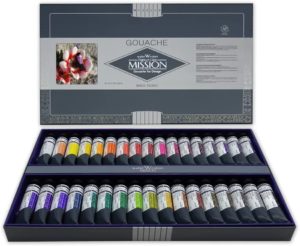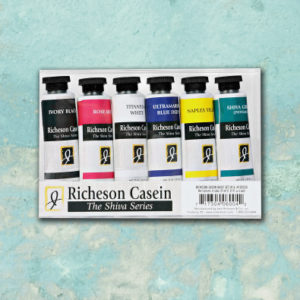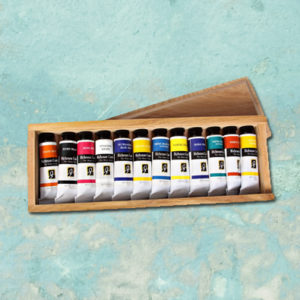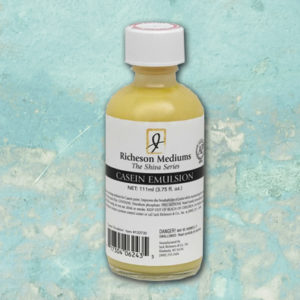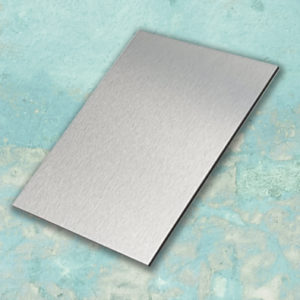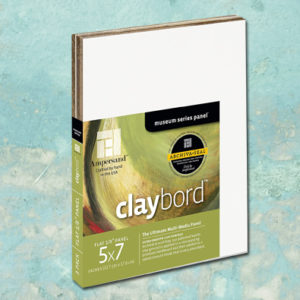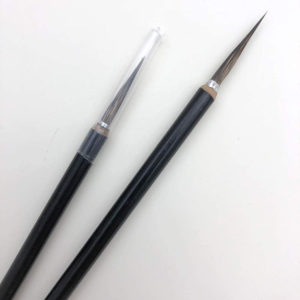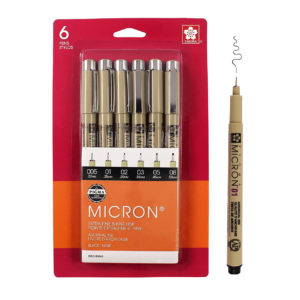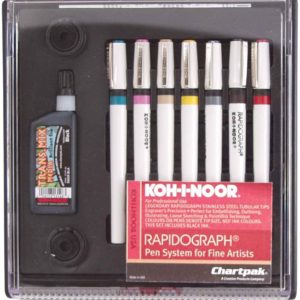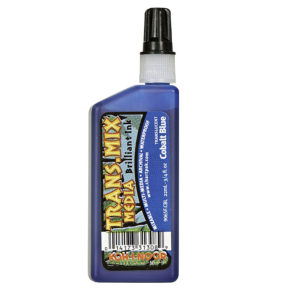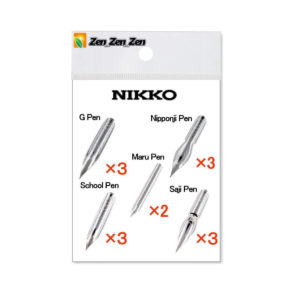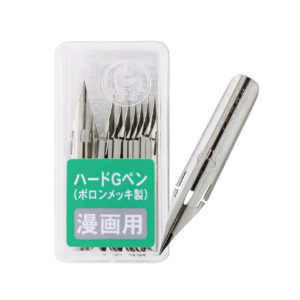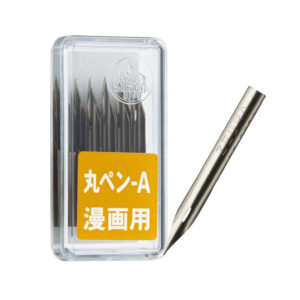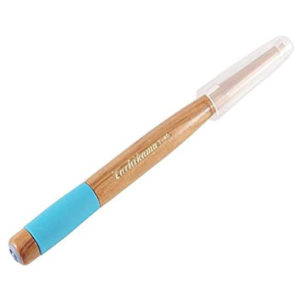Sad news. My Wacom graphics tablet died a few days ago

Mijello Mission Titanium Class Gouache
Mijello Mission Titanium Class
My review of gouache paint from Korean company Mijello Mission
I have Mijello’s watercolors and like them pretty well and saw they had a gouache line now so I decided to give it a try and purchased this set.
Their lightfastness ratings seem higher than normal for some of the colors, which is great… but leaves me a bit skeptical. I decided to make my own lightfastness test to put my mind at ease (no results yet, I just started the test a week ago, I’ll give it a check in a few months and report on my findings). In my tests making swatches, I really enjoyed the flow of these paints. They spread very easily and evenly. They are very vibrant when dry, even in a wash. I tested them out a bit when it came to cracking when dry and re-wettability and they preformed excellently. So far out of all the gouaches I’ve tried (Holbein, M. Graham, Winsor & Newton, Lefranc & Bourgeois) this one seems the best when it comes to (not) cracking and easily re-wetting.
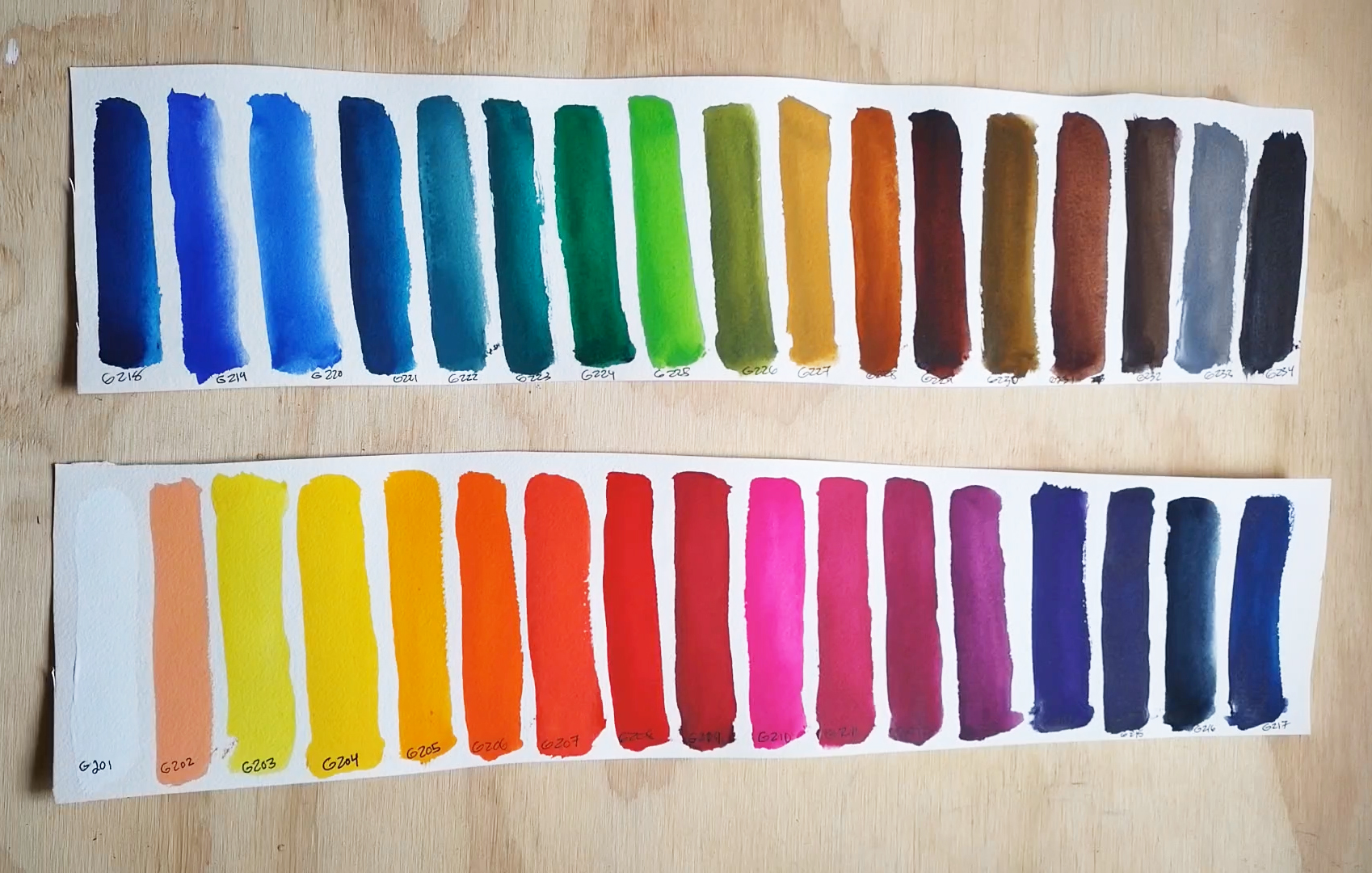
Overall I’m really liking this gouache, but there are a couple of downsides. The binder seems to separate a bit when it comes to some of the colors (not hugely unusual, but this brand seems to do that more than the other professional brands. Once the tubes are slightly less full, one can massage the tube to help recombine it before squeezing some out), also it seems to be a bit thinner constancy as well as shiner than other brands especially with thick application. This could certainly be a big downside for some people since gouache is usually very matte. I mainly purchased this gouache to add to casein since the casein paint that I use (Jack Richeson Shiva) doesn’t have a very big variety of colors but mixes well with gouache. With casein added, that helped reduce the shine of this gouache greatly, so for me it still works. Another downside is that you can only buy these paints in a set (at the moment) and not individually.
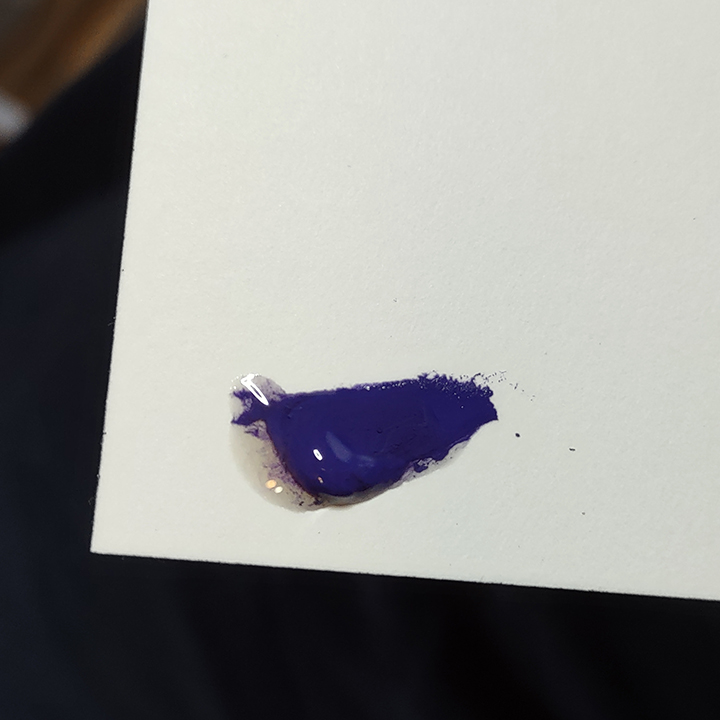
Binder/paint separation example.
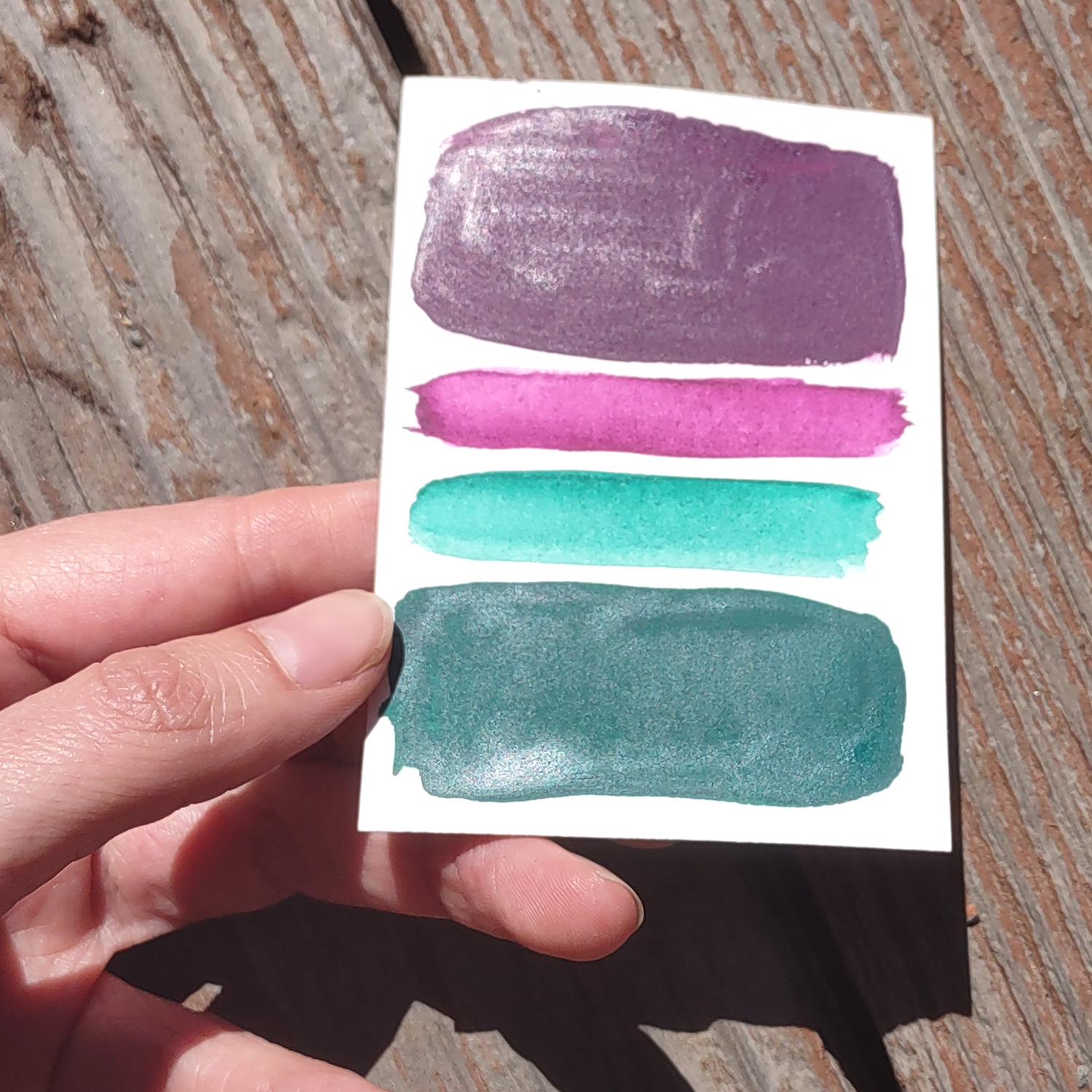
Shininess in thick application example (top and bottom are thick applications, middle lines are more of a wash)
I think this brand would be particularly good if you want to make a gouache travel palette due to it’s super easy re-wettability and non-crumbling nature. It’s very vibrant, opaque and as far as I can tell it’s packed with pigment. M. Graham is probably still my favorite brand, but Mijello Mission Gouache seems like a really good value for the amount of paint you get assuming the price does not significantly increase (comes out to about $4 for a 15ml tube at the time I purchased the set was $145).
If you’re wondering anything else about it, please feel free to comment on this post and I will do my best to answer.
LIGHTFASTNESS UPDATE!
I’ve put the samples in a full sun area for one month. So far, these pigments did really well, I’m very pleased! The only one where I could definitely see some fading issues was the one with only a 2 star lightfastness rating (out of 5) G210 Bright Rose which was to be expected as it’s that classic bright “Opera Pink” color that is always vulnerable to fading, the pigments used in this Bright Rose/Opera Pink color are BV7, BV10 and PR122. I put the samples back in the sun and I’ll check back a few months.
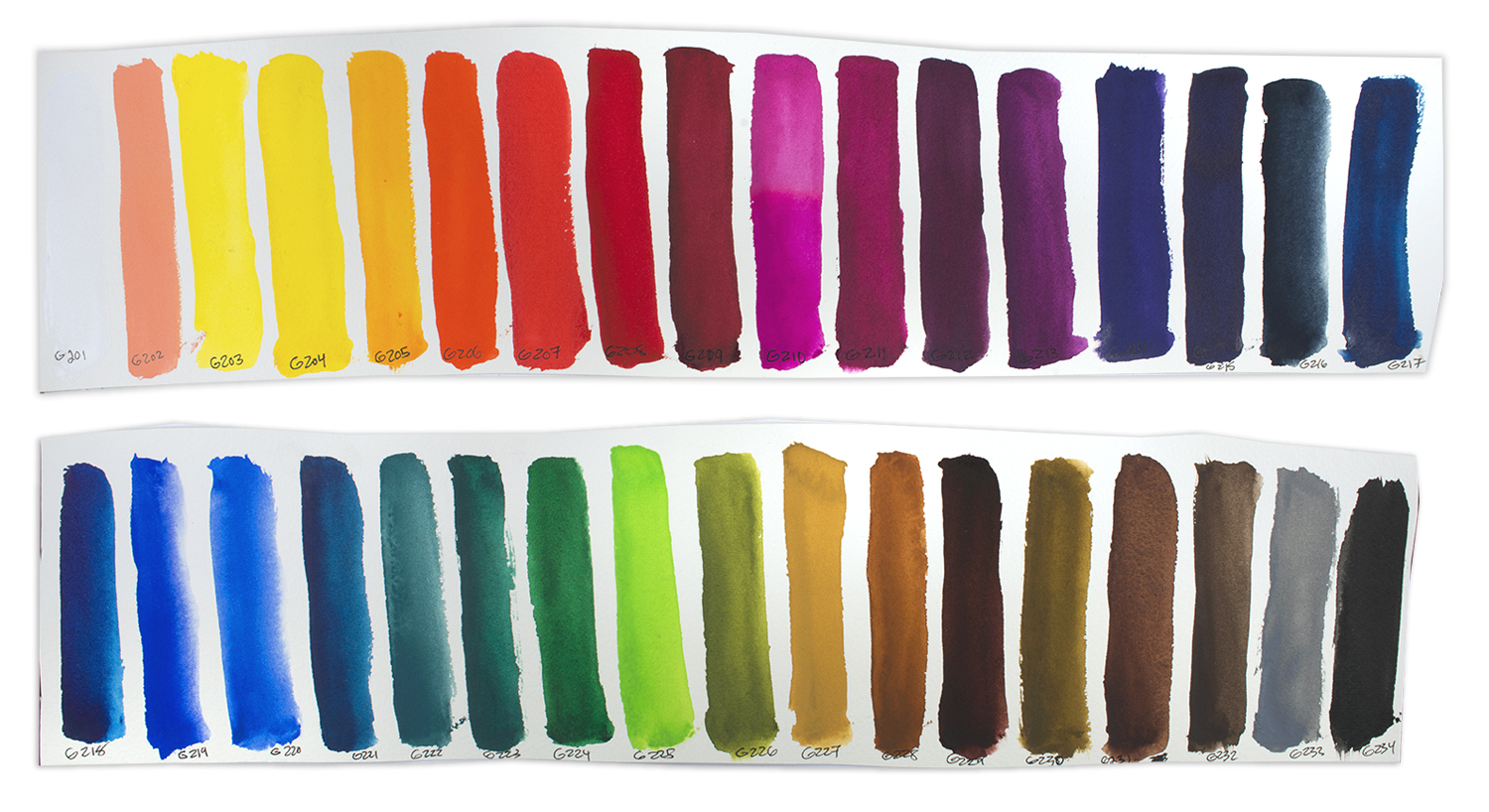

Stop Motion Studio
A Fun Way to Do Artsy Video Content for IG Reels, Youtube Shorts, TikTok Vids and the like

Casein Artist’s Paint
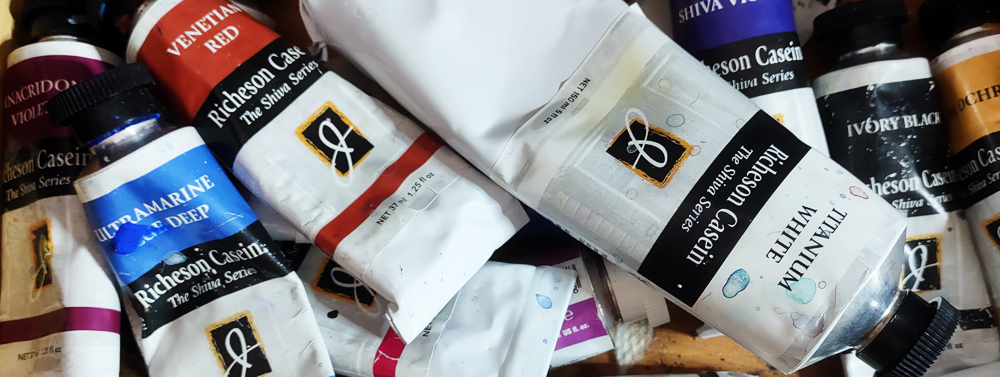
Casein Paint
Casein paint is one of my favorite paints these days. I have mostly replaced my gouache with this milk based water soluble paint. It’s a lot like gouache except for that cures after some time and becomes moisture resistant. This makes it easier to layer. Layering is always part of any of my artworks as it gives them depth. Casein also feels a little thicker than gouache, even when watered down. Jack Richeson makes an artist grade line of casein and that is what I use since the only alternative really it to make it yourself from dairy product or casein powder. I’ll try that some day but this Shiva line is overall really good as well as convenient as it available at most fine art supply stores or Amazon.
With gouache, it’s easy to disturb a paint layer that you’ve already made if you try to paint on top of it since gouache always remains water soluble. With casein, after it’s cured you can put a very wet wash layer on and your previous layers and it will remain undisturbed (as long as you don’t scrub), something which is completely impossible with gouache. That opens up some interesting technique possibilities for me. Curing time varies. Here in the dry desert climate it usually takes a few days to a week to really get water resistant. You don’t have to wait that long every time you want to work on it though if you want to treat it more like a gouache (knowing that if you paint really wet it will disturb the under layer). Sometimes you want that!
The finish is very velvety and matte. I’m likely to varnish it glossy if it’s a piece that I think would benefit greatly from more contrast particularly in the darks. When it cures, it’s very durable and will not scratch easily . To increase sheen and durability on an unvarnished casein painting, you can buff it with a soft dry cloth every now and then. Casein is one of the most stable, long lasting paints there is. Many cave paintings and ancient artworks were painted in casein since it is milk based which is a substance humans have always have had access to since we’re mammals (earliest casein paints were made with human milk!).
It’s also mixable with watercolor and gouache and most other watermedia (acrylic for example, though I don’t know much about that one). This can be nice because Shiva’s line (the only line there is really of artist grade casein) is pretty limited so it’s nice that you can modify your colors with other types of paint. You can also buy the binder for casein, which you can mix with pigments to make any color you want.
Another great feature about casein is that you can erase with ease! Always nice if you are attracted to perfectionism or if you like to work things out by trying this and that in your painting as you go. If the paint has not cured, water will likely be enough to erase dry paint. Once it’s been dry for a few weeks, it may require a solution of 1 parts ammonia to 9 parts water and a bit of scrubbing to remove paint.
What’s best to paint on? You can paint on paper (it’s an excellent paint for sketchbook as it doesn’t dry sticky like acrylic can). Just note, if you apply it too thick on paper it can crack. I do many layers so to stay safe I always paint on a rigid surface like a Masonite or aluminum panel. I always gesso it with an acrylic gesso when I paint on an Aluminum Panel, Ampersand – Claybord is another great option and it requires no prep.
As far as paintbrushes go, I really like my Chinese paint brushes as well as golden taklons that are fairly on the medium/stiff side. I avoid watercolor brushes except for when I’m heavily watering casein down. It’s a thick paint. It’s not good to let the paint dry in the brush, however it doesn’t kill the brush the way acrylic does. A soak in water or the 1 part ammonia, 9 part water solution previously mentioned will help if it has been dry for a while. You’ll have to work it a fair bit but I find I can usually get them mostly back to good working order.

Brushes For Lines
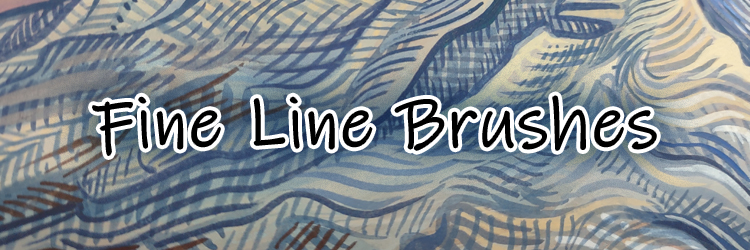
While I started off my artistic journey mostly working in pen and ink, more and more I find myself favoring painting for a couple reasons. One is I get irresistibly potent colors when I paint in gouache or casein, whereas pen and ink shines a bit better with more subtle color so the details of the ink lines don’t get overwhelmed by intense color. Another huge reason is, I’ve found I like to be able to change things and let a piece evolve somewhat while I work on it (a practice that isn’t very pen and ink friendly). That being said, my experience in pen and ink has come with me on my painting journey, very much influencing my painting style. A rough description of my painting technique may be summed up as many pen and ink artworks (done with brush and paint) layered upon each other. Of course it’s a little more complicated than that but those lines, dashes and dots of pen and ink are the same kind of marks I make in painting.
One of my most needed tools for my style of painting is liner brushes, script liner brushes.
These types of brushes have very long and straight hairs, that are very cylindrical tube shaped with no variation in width except for the sharp tip. The shape is very important because it will make pen-like uniform lines. As far as what type of hair, I’ve found that golden taklons tend to be best, the medium firmness makes them soft enough to hold the paint and stay together without fraying, yet firm enough to move the paint. On-top of all of that they tend to be inexpensive. They’re a great little workhorses.
These particular ones are my favorite these days
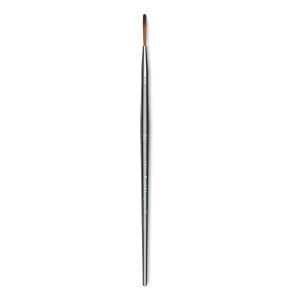
Royal Langnickel Zen Brush – Script, Size 1
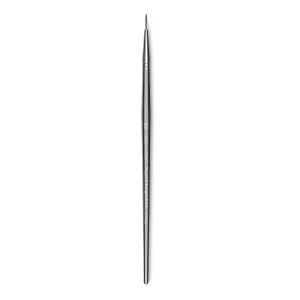
Royal Langnickel Zen Brush – Script, Size 20/0
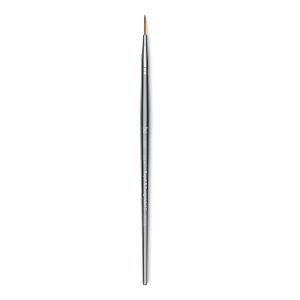
Royal Langnickel Zen Brush – Script Liner Brush 10/0
Brush sets for miniature painting or nail painting are usually good choices too if the brushes have the similar tubular, no-belly shape and are made of golden taklon.
More expressive liners
These days I am also using a lot of Chinese painting style liner brushes. They can still make a pretty good consistent width line if you are careful, and they can also make a somewhat more expressive line that varies a bit in width as well. Even with the elongated taper as compared to the taklon liners, they are still some of my favorites to paint with especially when working with Chinese paints on Xuan (Chinese rice paper), and I find that they work really well for casein painting as well.
That’s about it, I’ve tried a lot of liner brushes and since finding these options I haven’t been too adventurous to try anything different since they fit my needs quite well.

Pen and Ink Pens
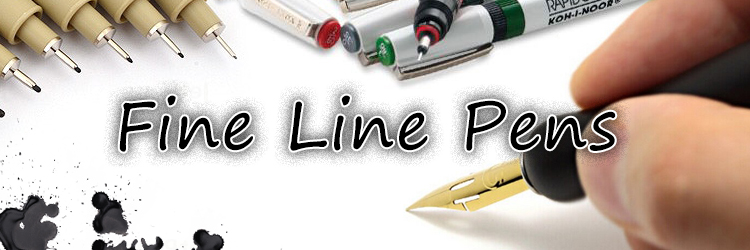
Pen and ink is the first medium that I really became obsessed with. I love it’s ability to create and emphasize flow in artworks. I regularly use line path and direction to bring out the hidden energy in a scene or suggest dimension, and pointillism for describing all that is detailed and subtle. It’s a great medium for someone like me who loves detail and tedious work.
There are a lot of pens out there to choose from and I use a few different types for different reasons. For the most part, I only work with fine point pens. If a bigger area needs full coverage ink, I use ink and brush.
The following is a list of my favorite 3 types of fine liners.
For disposable pens I usually just go with the ever popular Sakura Pigma Micron. These are the pens I started with when getting into pen and ink, and they’re still a solid choice. They are dependable, pigmented archival ink pens which are affordable and easy to find at almost any place art supplies are sold. Their nibs can be fragile, if you press down too hard while drawing you can push it in and ruin it. I did that many times before finally training myself to have a lighter more gentle grip (which is really for the best anyway). The ink flow is more dry than the other pens I will mention, which makes it good for beginners because it makes it harder to accidentally smudge. They’re definitely a must try for anyone getting into ink drawing.
Getting Fancy.
Eventually I got curious and tried out technical pens which come in self fill or cartridge fill types. Biggest benefit to these puppies for me was the deliciously juicy dark black lines you can get even with the finest nibs! I used them for a really long time and I still love the satisfyingly uniform lines they make. The freshest Micron is just not nearly as louchously dark as a tech pen.
Oh, but I got me a couple complaints too though. For one, they were made for drafting, not art so you have to use them as straight up and down as possible. I don’t know about you, but for me it feels easier and more comfortable to be able to hold a pen at an angle. But holding them at an angle both impedes optimal flow and makes it easier to accidentally bend the nib which can make it leaky or clogged, usually with little hope of being able to be fixed. The other huge downside is you have to keep the nibs clean and never let the ink dry out because it can be a pain to revive them when that happens.
You really have to watch out and take care of them, they are very expensive! If you’re good at that sort of thing these may be for you.
Rotring Rapidograph .18 and .25 ended up being my favorites. They work on ink cartridge. I find as long as I use them every couple of days, they’ll continue to work and don’t clog or dry up.
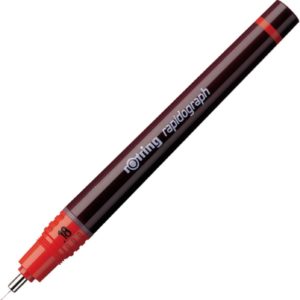
Rotring Rapidograph .18
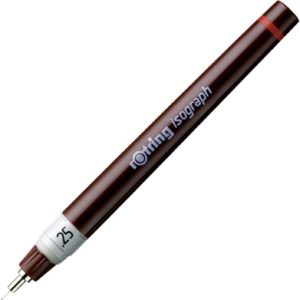
Rotring Rapidograph .25
Koh-I-Noor is another great brand, and for those looking for more flexibility when it comes to ink, these self-fills are fantastic.
I highly recommend using their Trans Mix Media inks. They work great in the pens, they’re easy to mix if you want to make your own colors and they even work just fine for ink painting.
My current favorite?
The pen I use the most these days is a dip pen. It’s not quite as easy to make uniform lines, but it can be done well with practice. I enjoy that I have the option to have a more varied line, which feels a little more human and expressive.
There are many reasons to love the dip pen. They’re inexpensive. I suppose one could spend a fortune on an ink collection for your dip pens, but overall, dip pen is an inexpensive way to go as compared with something like tech pens. They’re flexible. Use any ink you want pretty much, and even paint (as long as it is thinned to the right consistency). Easy Cleanup. I give the nib a rinse in water and then a wipe and I’m done. Pretty easy!
The down sides for me is it’s not the most convenient for any kind of on-the-go drawing. Can be messier than other pens, all that liquid ink can get crazy. One tends to get accidental ink blobs on their art and inky fingers more than with other drawing methods.
There are various types of nibs of course. I really like Manga nibs in particular for drawing. Beginners may want to try a variety set, to find a personal fave.
I find personally I only really need G and Maru nibs. G is an all around great nib, precise with a bit of flex for some line width variation.
Maru is a much more firm nib with little flex, great for finest details.
For a nib holder, this Tachikawa one works great. Although it is very easy to switch nibs, I use a separate holder for each type of nib so i don’t have to bother.
Since you can use almost any ink (or ink consistency paint) in a dip pen, I don’t have one strong favorite thing to use since there are so many good choices, but I do probably have a lot of opinions about various inks so I think I’ll make another post just about those.
If you have any questions about pen and ink supplies or methods, feel free to ask or comment below.

